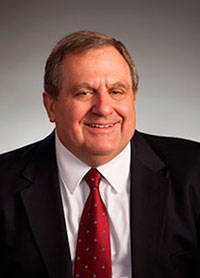Just before Veterans Day, the last known survivor of the Japanese attack on Pearl Harbor died at age 98. With the passing of George Hursey of Massachusetts, it closed that chapter of World War II — the world’s most deadly conflict in which over 60 million people perished.
President Franklin D. Roosevelt called Dec. 7, 1941, “the date which will live in infamy.” During the surprise attack, 350 Japanese aircraft descended on Pearl Harbor and nearby Hawaiian military installations in two waves. More than 2,400 Americans were killed, and 21 ships were sunk or damaged.
Hursey lived to fight elsewhere in the Pacific Theater, including New Guinea and Guadalcanal, where he was injured. He was discharged from the Army in 1945 after reaching the rank of First Sergeant.
According to the U.S. Dept. of Veterans Affairs, the men and women who fought and won World War II are now in their late 80s and 90s. They are dying quickly (400 per day) and the last estimate is fewer than 389,000 of the 16 million Americans who served are alive.
In his book, Tom Brokaw called them our “Greatest Generation.” He wrote these men and women fought not for fame or recognition, but because it was the “right thing to do.”
“They grew up during the Great Depression and went on to fight in World War II and contributed to the war effort on the home front,” Brokaw added.
World War II impacted every family. My father and his two brothers were Army veterans who served in the Pacific and European theaters. Letters from the battlefront were sporadic and my grandparents lived with the fear that representatives from the War Dept. would show up on their doorstep with the news that one of their sons was either killed or missing in action.
Even with today’s modern communications, war is difficult for many families who have loved ones deployed in foreign combat zone such as Iraq and Afghanistan. It is equally hard for those whose relatives have been killed or suffer from permanent psychological and physical wounds.
There is a new appreciation for our military that was absent during the Vietnam conflict. And, thankfully we are addressing important psychological needs such as Posttraumatic stress disorder (PTSD). We now recognize that mental and emotional wounds are as serious as loss of limbs or mobility.
Once called shell shock or battle fatigue syndrome, it is a serious condition that can develop after a person has experienced or witnessed a traumatic or terrifying event in which serious physical harm occurred or was threatened. PTSD extends beyond the military to law enforcement, emergency responders, rape victims, and those suffering the consequences of heinous crimes and disasters.
We are just scratching the surface of PTSD. While many World War II veterans coped with “shell shock” by parking it in the back of their minds and hoping it just goes away, we are learning PTSD needs to be treated. Hiding it can lead to suicide.
In the United States, more than 40,000 people commit suicide each year. USA Today reports last year, 325 active-duty troops died by suicide, a rate of 24.8 per 100,000. The civilian suicide rate is 18 per 100,000.
While it is undocumented, the suicide rate among our military in WWII was thought to be much less than it is today. After WWII, speculations is it may have been under reported.
Perhaps we can learn from World War II documents. That is a good reason to keep the memory of America’s Greatest Generation and veterans, such as George Hursey, alive. Studying their lives just may unlock information helpful to treating emotional disorders.
Don C. Brunell is a business analyst, writer and columnist. He retired as president of the Association of Washington Business, the state’s oldest and largest business organization, and now lives in Vancouver. He can be contacted at theBrunells@msn.com.


